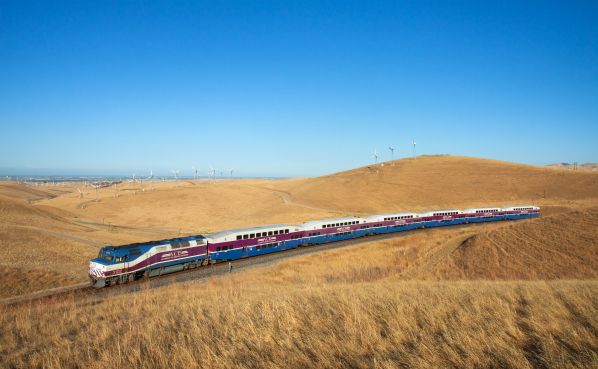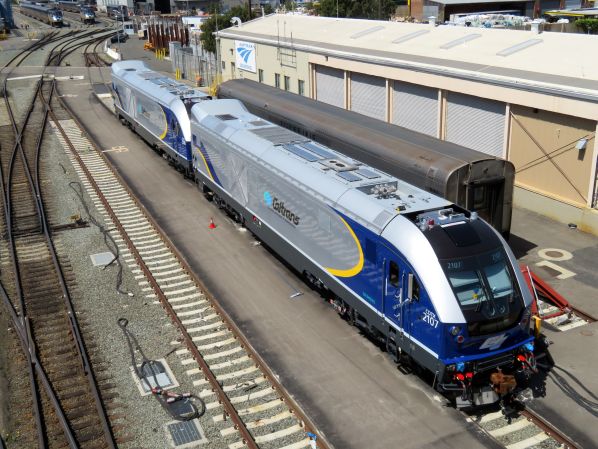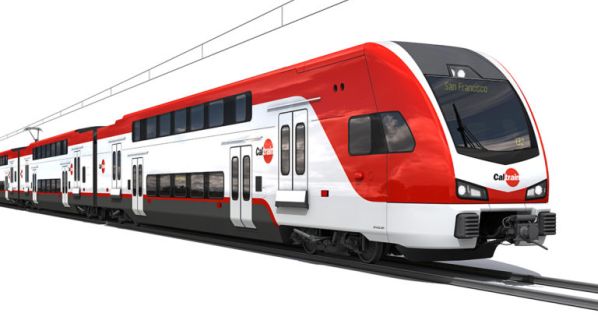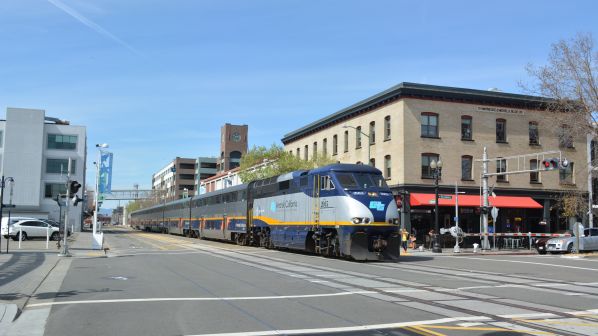CALIFORNIA has the largest population and the largest economy of any US state, but for decades infrastructure has struggled to keep pace with growth. A report by the Bay Area Council puts the cost of California’s unfunded infrastructure needs at up to $US 737bn and possibly as much as $US 765bn.
According to a 2016 report by the National Transportation Research Group, vehicle miles travelled on the state’s highway network increased by 15% between 2000 and 2015 and is forecast to grow by another 15% by 2030. The state is paying a high price for this - estimates from the Texas Transportation Institute (TTI) indicate the value of lost time and wasted fuel as a result of traffic congestion in California is around $US 28bn a year and the average driver in the Los Angeles Basin spends up to 80 hours a year sitting in traffic jams.
Infrastructure is also under pressure from a growing population, which increased 16% between 2000 and 2015 to reach 39.1 million and is forecast to reach 50 million by 2040. In addition, house prices are more than double the national average and still climbing, driving the rise of the so-called super commuter, who spends 90 minutes or more each day travelling to and from work. Five of the top-10 US cities with the highest proportion of super commuters are in California.
The lure of California’s cities is growing and 83% of the state’s population are city dwellers. Increasingly, the highest-paid jobs are concentrated in the so-called superstar cities - including Los Angeles and San Francisco - a trend driven in part by the meteoric rise of the state’s tech industries.
All this is adding to the intense pressure on resources and the environment. The 2018 wildfire season was the worst on record, killing 100 people and providing a sobering reminder of the risks California faces from climate change. The state has set a target of reducing greenhouse gas emissions to 40% below 1990 levels by 2030, a goal that is unlikely to be reached without a fundamental rethink of how Californians move.

These megatrends have helped to mould the state government’s California Transportation Plan 2040 (CTP). This encompasses seven mode-specific plans, including the latest California State Rail Plan (CSRP) which was published in September 2018, and aims to take a whole-system approach to planning with the aim of building an integrated multimodal network.
The CSRP notes that a lack of integration between modes, in terms of timetables, physical connections and payment systems, make multimodal journeys difficult, while uncompetitive journey times and low frequencies make rail an unattractive option in some areas. The 2040 vision aims to overcome many of these barriers.
This process starts with optiming existing rail links. “We already have a lot of rail right-of-way in California so a big focus in the plan is to get the most out of these corridors,” explains Mr Chad Edison, deputy secretary for California State Transportation Agency (CalSTA). “We need to lower infrastructure costs state-wide - it’s too expensive to do it all with air and highway. We’re also responding to megaregional issues such as long commutes and the cost of housing. The rail plan is not about longer trips, it’s about stations that promote good access to jobs and housing and infrastructure that are integrated with land use strategies. Local governments tend to support placing new housing close to existing or future transit hubs because if you have a system of park-and-ride lots where everyone has to drive part of their journey you don’t have an efficient transportation system. We want to tie together services in a way that is user friendly, providing more travel options for more people.”
The state’s 2040 Vision for rail calls for the development of a “pulsed system” with a timetable of regular-interval train services running in an hourly or half-hourly service pattern, fed by express buses connecting small and remote markets to the rail network via efficient hubs. On mixed-traffic corridors, which are generally owned by the freight railways, the plan aims to provide sufficient capacity to ensure higher-frequency passenger operations do not reduce the efficiency and flexibility of freight operations. Different service levels are considered for selected routes, with regional as well as inter-city and commuter rail services sharing infrastructure.
California’s passenger rail scene is a multi-stakeholder environment with numerous agencies playing a role in decision making and funding allocation at local, regional and state levels. The CSRP emphasises the need for close integration between agencies to avoid overlapping or duplicate investments and ensure that projects meet the long-term needs of the communities they are intended to serve. “Coordination is about integration between different agencies and also improving the productivity of the system,” Edison says. “We need to implement projects in a way that is future-proof.”
Coordination also extends to the fares system, and the CSRP calls for a much higher degree of integration and multimodal ticketing to meet the goal of door-to-door service. California Department of Transportation (Caltrans) has set a target of tripling bicycle trips and doubling walking and public transport journeys by 2030, while the CSRP envisages increasing inter-city rail ridership from 115,000 to 1.3 million passengers a day (including the high-speed network) by 2040. “If we can get the first and last mile right, we can meet the ridership goals of the CSRP,” explains Mr Kyle Gradinger, assistant division chief of the Caltrans Division of Rail and Mass Transportation. “This means we need to look carefully at the physical design of stations and networks for buses and LRT to ensure we have seamless interchange between modes. We also need the right combination of design, technology and finessed schedules.”
Phased plan
The CSRP sets out a three-phase approach for delivering California’s 2040 vision for an integrated network:
- Short-Term (by 2022): improvements already at the planning stage for which funding for construction and implementation is largely committed. These improvements are intended to serve as the foundation for integrating the rail network. The short-term plan identifies the region-specific service planning studies required to implement the mid-term and long-term vision. The short-term programme also aims to address the significant existing rail freight bottlenecks.
- Mid-Term (by 2027): the state coordinates actions with rail partners to grow passenger services to a level that maximises use of the capacity available on existing rail infrastructure, with targeted infrastructure investments that tie services together and provide new access to different regions, including regions that now have only limited rail access. Key rail freight corridors will also benefit from capacity enhancements.
- Long-Term (by 2040): the long-term capital plan includes the infrastructure elements required to support the service and connectivity goals of the state’s 2040 vision, and to maximise the performance and market capture potential of passenger rail. Additional investments are planned in the freight network at this stage to accommodate high-frequency passenger services.
According to the CSRP, state support for network and station planning will ensure that stations are pedestrian and bicycle-friendly and accessible to public transit systems, promoting car-free travel in many areas. The state will also seek to coordinate bus and rail schedules to ensure good connections at stations with lower-frequency services.
By 2027, there will be a minimum two-hourly-interval service on the core rail network, including integrated bus connections to destinations such as Redding and Reno, Nevada, with hourly services on key corridors. Caltrans says its 2027 plan is based on funding levels “reasonably expected from sources currently available at the federal, state, and local levels.”
The 2027 plan also begins to leverage the initial stage of the high-speed network with “HSR revenue service-ready corridors” in the Central Valley (Madera - Bakersfield) and Silicon Valley (San Francisco - Gilroy), the latter taking advantage of the electrification of Caltrain’s San Francisco - San Jose line.
In its 2018 business plan, California High-Speed Rail Authority (CHSRA) says early interim services on the Silicon Valley and the Central Valley sections could begin in 2027. Connecting the two sections via the Pacheo Pass tunnels would provide workers in San Francisco and Silicon Valley with access to more affordable housing in cities such as Gilroy, Merced and Fresno. High-speed rail will reduce the San Francisco - Fresno journey time to around an hour, compared with the current drive of up to three hours.
Between 2027 and 2040 California aims to expand the high-speed network beyond it’s initial operating segments, expand network capacity to fully achieve its integrated service goals, establish regional rail networks, and further boost frequencies on core routes.
In addition to enhancements within the state, CSRP expresses California’s commitment to maintaining long-distance Amtrak connections with Oregon, Nevada, Arizona and further afield, which provide the only passenger rail service in some areas of the state. The state will also continue to work with Nevada High Speed Rail Authority and Virgn Trains USA to support the development of a privately-financed high-speed line linking Las Vegas with Victorville east of Los Angeles, where it will meet the California HSR system.
Turning the 2040 Vision into reality naturally depends on the ability to tap into stable, long-term funding, requiring support from a range of stakeholders at federal, state and local levels.
At the top of the tree, the administration of president, Mr Donald Trump, has sought to defund grant programmes and slash Amtrak funding, although it has come up against resistance from Congress, where there is a degree of bipartisan support for rail. Trump’s proposal to scrap the Transportation Investment Generating Economic Recovery (Tiger) grant funding programme, which had been introduced by the Obama administration, was rejected by Congress. The US Department of Transportation (USDOT) subsequently amended the funding award criteria with measures including higher weighting for projects involving private finance. At this point, Tiger gave way to a clunky new acronym - Better Utilising Investments to Leverage Development (Build).

Build has a budget of $US 1.5bn for the 2019 financial year but attracted 851 applications from local and state governments seeking nearly $US 11bn, highlighting the huge disparity between supply and demand for federal grant funding. With just 11.2% of the budget going to transit and 9.6% to rail freight projects, Build is a feeble response to the transport investment challenges facing cities and states across the US.
Like many states, funding for rail investment in California is drawn from a wide variety of sources at local and state levels. “We’re currently investing around $US 4bn in projects benefiting intercity-rail and the corridor services that share operations with them, and about $3bn on commuter rail only corridors,” Edison explains. “Only about $US 900 million of that is federal cash.
“The federal government isn’t as big a partner as we’d like it to be but we are well poised for future competitive grant funding programmes. Priorities change from one year to the next and we try to align our plans with what is available. The CSRP is important in this context because the federal government wants state rail plans to be updated every four years.”
Taxing carbon
A key mechanism for funding rail projects in California is the Transit and Intercity Rail Capital Program (TIRCP), which is used to disburse funds from the state’s Greenhouse Gas Reduction Fund and the Road Repair and Accountability Act of 2017 or Senate Bill 1 (SB1). TIRCP receives 10% of the auction proceeds from all California Air Resource Board’s Cap-and-Trade auctions, ensuring the state’s largest greenhouse gas emitters pay for low-carbon transport investment. SB1 meanwhile will channel $US 7.6bn into transit projects over 10 years.
TIRCP has four key aims:
- reduce greenhouse gas emissions
- expand and improve rail services to increase ridership
- integrate the rail services of various operators, including integration with the high-speed network, and
- improve safety.
In April 2018 CalSTA awarded 28 TIRCP grants totalling more than $US 2.6bn for transit and rail projects together with an additional $US 1.7bn for seven major projects through multi-year funding agreements.
Many of the projects selected to receive funding will promote closer integration of the public transport network. The extension of Bay Area Rapid Transit (Bart) to San Jose and Santa Clara will establish San Jose Diridon station as a key hub in the Bay Area public transport network, with links to inter-city rail, commuter rail, light rail and bus services. The extension of Sonoma Marin Area Rapid Transit (Smart) to Larkspur will give the commuter rail line an interchange with ferries to downtown San Francisco. In the Central Valley, grants will support the integration of Altamont Commuter Express (Ace) and San Joaquin inter-city rail services while providing new links to Ceres and Sacramento.

Alongside the myriad sources of public funds, California sees opportunities for private sector participation in the development of the rail network. “We already have a big private sector investor, the freight railroads, and we are creating an operator-neutral set of investments, particularly with high-speed rail,” Edison says.
“There are a lot of other opportunities for private sector participation in areas such as fleet acquisition and financing,” Gradinger adds. “We’ve attracted a lot of interest from both the US and abroad during 2018.”
California’s ability to deliver the measures proposed in the CSRP may be hindered by several external factors. Massive investments are required to bring water infrastructure up to a standard that begins to meet the needs of its current population, let alone the extra 10 million people who will call California home by 2040. California was the first US state to establish the right to water, and keeping supplies flowing to homes and businesses is a top priority at all levels of government. State and local governments are grappling with debts of $US 1.3 trillion, with an estimated $US 1 trillion in pension liabilities on top of this. Then there’s the question of maintaining tax revenues at stable rates - California currently ranks 10th in the highest-taxed US states and some funding sources therefore could be vulnerable to political changes.
Nonetheless, the recent extension of the Cap-and-Trade programme to 2030 indicates a determination at state level to provide stable sources of funding. Public support for transit investment also remains solid. According to an analysis of 2018 transport ballot measures by the Eno Center for Transportation, voters in the state have approved $US 8.6bn for transport investment in ballots this year.
The state rail plan offers a vision of how rail can become much more closely aligned with the daily mobility needs of Californians, and finally provide a viable, sustainable alternative to the car for a much greater proportion of the population.

